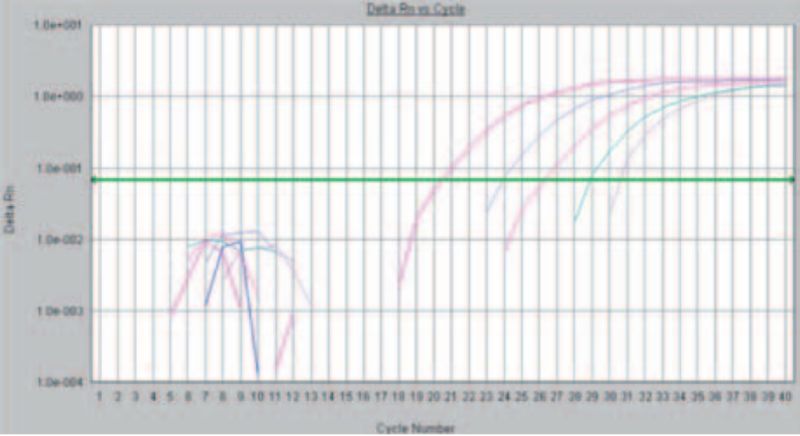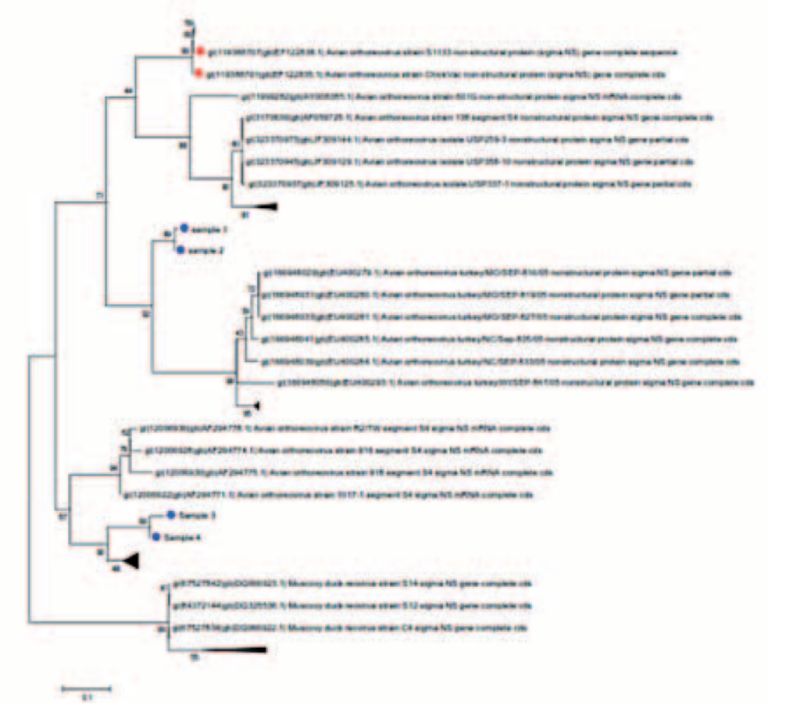For the diagnosis of diseases in veterinary medicine the technique of PCR (polymerase chain reaction) could be used since
several years. In this method, individual genome sections of
the pathogen are propagated by repeating different temperature steps and thus finally made them detectable. In addition,
pathogens could be typed and differentiated from vaccine
strains. This can for example be done by a vaccine – specific
PCR or by subsequent sequencing of the PCR product.
The direct detection of the genetic material of the pathogen by means of PCR, in
contrast to serological tests, has the advantage that diseases can be promptly
detected after the initial infection. The PCR
provides here a faster method than e.g. the
cultivation of viral pathogens in eggs or
cell cultures. However, the genetic material
of the pathogen may possibly no longer
be detected after a successful fight of the
immune system against infection. Thus,
the PCR may serve as a practical complement to serological tests that detect the
antibodies produced by the host organism
and help to overcome the gap in diagnostics between the time of infection and the
production of antibodies.
Basically, PCR reactions could be differentiated in two techniques: During the first
one, the “Endpoint” -based PCR, after the
PCR reaction the products are separated in
an agarose gel according to the size of the
product and are stained. With the faster
and more sensitive method the formation
of the PCR products during the temperature cycles is observed in real time (Fig. 1).
In recent years the veterinary laboratory
has almost all the PCR detection methods
converted to real-time PCR. This allows
faster processing of the samples and more
precise results by using this more sensitive
method.
 Figure 1: Detection of Avian Infectious Bronchitis via “real time” PCR. The rising curves
indicate an increase in fluorescence and thus prove the presence of genetic material
of the pathogen
Figure 1: Detection of Avian Infectious Bronchitis via “real time” PCR. The rising curves
indicate an increase in fluorescence and thus prove the presence of genetic material
of the pathogen
Frequently requested examinations in the
veterinary laboratory of LTZ are the detection of Avian Influenza (AIV), Avian Infectious Bronchitis (IBV), Mycoplasma (Mg / Ms)
and Avian Metapneumovirus (AMPV, TRT).
AIV can by typed by further PCRs in H5, H7
or H9. For serotyping of IBV recently “Real
Time” detection systems for the serotypesQX, Italy O2, Massachusetts,
D 274, 4/ 91 and D 1466 have
been newly developed. By
using a further PCR followed
by sequencing positive Ms
and Mg results can distinguish vaccine from field
strains.
Further real-time PCR tests
can for example be performed for the detection
of Newcastle disease virus
(NDV), Marek’s Disease and
Egg Drop Syndrome virus
(EDS). For ND virus a further
PCR reaction followed by sequencing of the F1 cleavage
site could determine pathogenicity and classification of
the strains.
Overall, as established in the
veterinary laboratory at present the detection of more
than 25 pathogens is possible, with development of
further detection systems.
As matrices for the detection
tracheal or cloacal swabs, FTA cards or organs can be used depending on the agent
to be detected.
 Figure 2: Phylogenetic trees of selected Orthoreoviruses; blue points are from field isolates, vaccine strains in red
Figure 2: Phylogenetic trees of selected Orthoreoviruses; blue points are from field isolates, vaccine strains in red
In addition, typing can be carried out for
Avian Orthoreovirus, Fowl Adenovirus
(FAdV) and Infectious Bursal Disease Virus
(IBDV). Through this, vaccine from field
strains could be distinguished, the phylogenetic relationships of different virus isolates be determined (Fig. 2) and serotyping
could be done. This method can serve as a
decision aid in the selection of isolates for
the production of autogenous vaccines.
For typing of FAdV and Orthoreovirus the
initial culture in liver cells is recommended
in order firstly to achieve enrichment of the
viral material as well as to be able, where
appropriate, to use the isolate obtained for
vaccine production later.
Dr. Martin Barz and
Dr. Matthias Voss,
Veterinary Laboratory
 Linkedin
Linkedin

